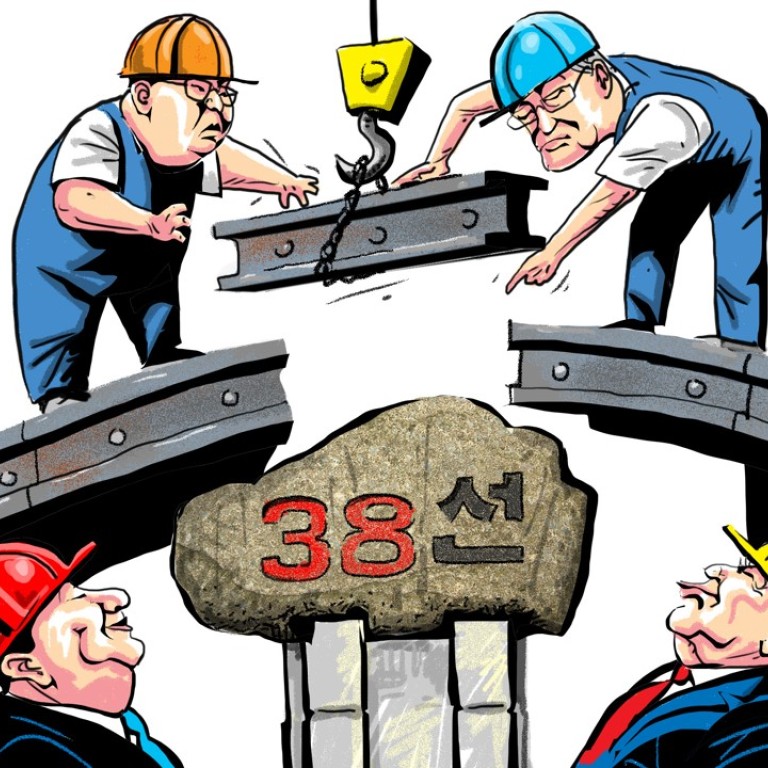
US-North Korea summit can undo the historical mistakes that led to division
Charles Armstrong and John Barry Kotch say that the original Korean division was the product of a poorly thought-out American policy, and that the summits between the two Koreas and then between Kim Jong-un and Donald Trump provide opportunities to rectify this mistake
This history goes well beyond the nuclear crises of the post-cold war era to the Korean war of 1950-53, and the division of Korea at the end of the second world war.

The initial failure of American policymakers to follow the recommendation of State Department planners to administer the country “as a single administrative unit and not as separate zones” has been the driver of instability, the militarisation of the peninsula and unceasing hostility between the two Koreas and between North Korea and the US.
As the occupation wore on, the two powers found themselves at loggerheads over plans for a unified Korean administration and a multi-power trusteeship leading to the creation of a provisional Korean democratic government under the aegis of a Soviet-American joint commission. The failure to reach agreement on which Korean political parties and social organisations were eligible for consultation and, by extension, participation in a provisional government resulted in the collapse of negotiations in 1947.
Separate elections followed in the South and in the North, and two rival regimes emerged in 1948 – one sponsored by Washington, the other by Moscow.
When the inter-Korean summit went off script and tensions surfaced
Hopes must not be dashed after two Koreas take steps to peace
Now, the question is whether the two Koreas can build on this, overcoming their division not only symbolically but substantively. They will have an opportunity in future planned meetings, first between high-level military officials in May and a Pyongyang summit tentatively set for autumn.
Can the Korea summit move closer towards an end to hostilities lacking since 1953?
The process of denuclearisation is essentially a technical challenge requiring accounting for and dismantling North Korea’s arsenal of 20 or more nuclear weapons, the facilities processing fissile material, and ballistic missiles (along with their components and launching pads). Modifying the political and security equation on the peninsula and ending the cold war structure there, however, would require reconstituting relationships among and between North and South Korea, the US and North Korea, and the US and China, with the goal of a peaceful and stable peninsula, the only basis for long-term security and prosperity in the region.
Korea summit: Euphoria now, but Kim Jong-un’s real test is to come – Donald Trump
Charles K. Armstrong is a professor of Korean Studies at Columbia University. John Barry Kotch is a political historian and former State Department consultant


